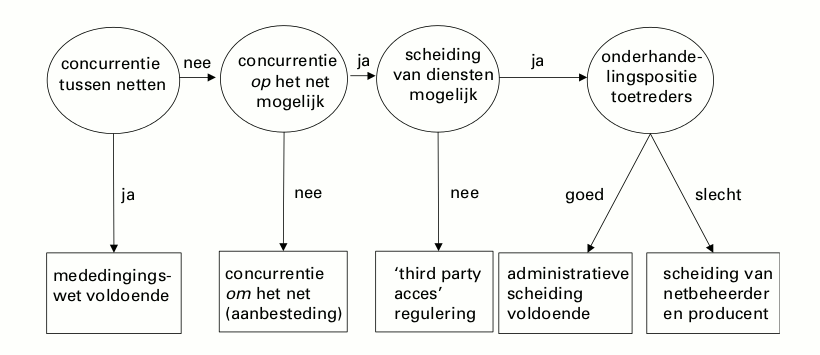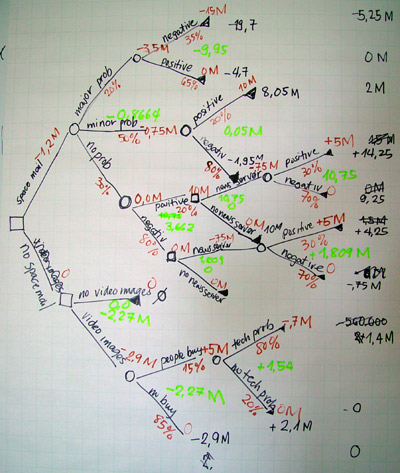After reading an article in my newspaper about decision making and the role of regulators (dutch, source NRC) plus this older article (dutch, 1999, source nrc), I found two different types of decision trees.
First, there is one like Prof. Dr. Sweder van Wijnbergen developed for the dutch ministry of finance. This tree is more a decision making flow chart (source aef, page 11), a tree that leads to action based on a framework of experience:

Second, there is the type that helps compare possible outcomes (source wiki), that leads to action based on ball park figures and best estimates:

Both decision trees however offer the support of shared understanding. This overview is not only helpfull to work towards the decision itself, but mainly helps exploring and explaining the process of decision making. They support a dialogue better and faster that any text paragraph would do and offer support in conflict resolution.
There’s clearly a functional overlap between decision trees and argument maps (see periodic table, information visualization). All types have both a sense making function and a memory / retention function.
This slidedeck explains more about how elements of a tree/map support organizing information: segmentation (a series of propositions), coding & hierarchy.